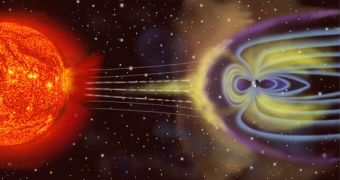Electric energy is crucial for Earth and its cycles. The Globe is like a huge electric circuit. The Ionosphere layer of the atmosphere is positively charged and the Earth is negatively charged. The difference is of about 250,000 volts. If we could make the connection, through a conductor, between Earth and Ionosphere, the whole Earth would experience short circuit. If we could do this, the weather would change, but the effects would be unforeseeable.
The ionosphere is located over 70 km (42 mi) off Earth. The air density is the lowest and this layer comprises just 0,001 % of the total volume of the atmosphere gases. The temperature increases at 500 km (300 mi) to 1,200o C. In the ionosphere, sun radiations cause ionization: the particles are electrically charged. When the charged particles hit each other, the phenomenon of aurora borealis or aurora australis (polar lights) can be observed. The ionosphere reflects the radio waves employed in telecommunications.
The meteorological forecast does not mention the electrical charge of the atmosphere, even if this affects the direction of the storms and the volume of the rainfall. This electric energy is generated both by Earth and by Sun.
At each 11 years, the Sun reaches a peak of activity. It is then when it sends an extra energy to the ionosphere via solar storms, increasing its electrical tension and the intensity of the electrical fields of the atmosphere. In time, the accumulated effects will have dramatic effects on the weather.
A modification of the routes of the storms of the northern Atlantic Ocean by 3-4o on latitude is enough to affect the clime of the West European countries for a season.
The Earth has a good "memory", it "recalls" any modification in the ionosphere. The increase of the wind intensity in ionosphere by 20% and the increase of its temperature may not look much, at least not on short term, but the effects accumulate, producing great changes in the lower part of the atmosphere.
The radio microwaves transmitted into the ionosphere, to altitudes of 200 km (120 mi) cause in small area of this layer of the atmosphere the same effects like the sun. The heating of the molecules via radio waves in areas close to the Poles, like in Norway, cause mini-aurorae like phenomena. But to match the energy delivered by the sun, we would need to transmit via radio waves into the ionosphere all the energy produced by the totality of the power plants in the world for 10 years!

 14 DAY TRIAL //
14 DAY TRIAL //